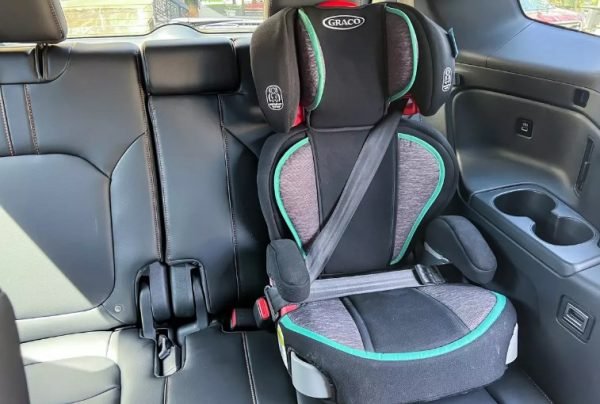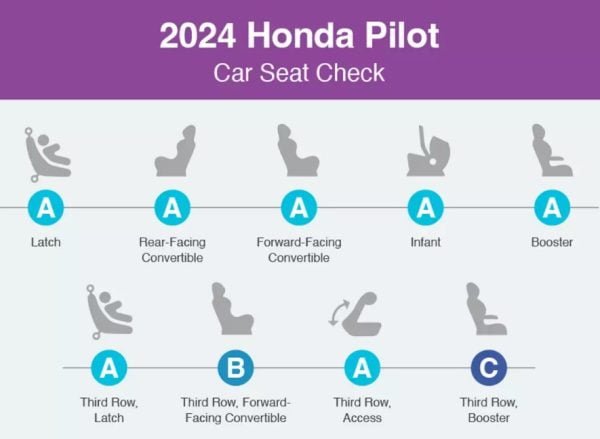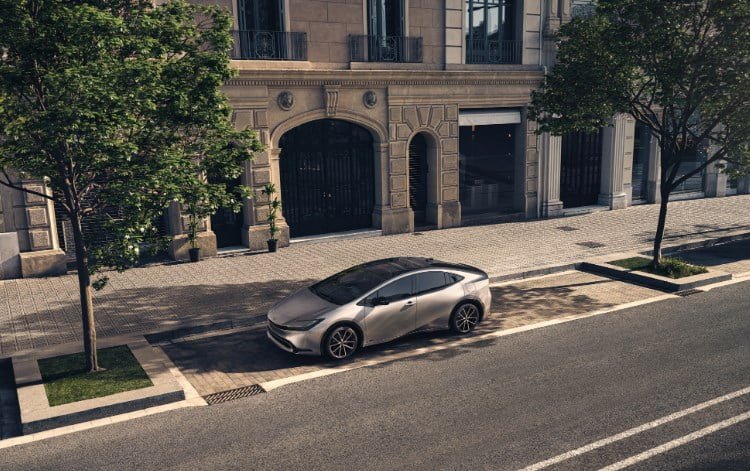Honda redesigned the Pilot for 2023, and the three-row SUV is bigger and more powerful than before. In back, the automaker added a newly available second-row seat that can be removed and stowed for more flexibility. For this Car Seat Check, we tested the new TrailSport trim with second-row captain’s chairs, and it handled car seats with ease thanks to its easy-access Latch anchors and ample second-row legroom.
Take a look at how the Latch system and each car seat scored below in our Car Seat Check of the 2023 Honda Pilot.

A Grade
Latch: There are two sets of anchors in the second row, and they were easy to use. Two top tether anchors sit on the seatback; they were also problem-free.
Third-row Latch: The Pilot’s third row has one set of lower anchors on the passenger side that are exposed and easy to use. There are three top tether anchors on the third-row seatbacks; they’re clearly marked for easy access.
Infant: This seat was easy to install, and our 5-foot-6-inch front passenger had plenty of legroom in front of it.
Rear-facing convertible: Again, installation was drama-free and did not impact front-passenger legroom.
Forward-facing convertible: After raising the head restraint, this seat fit well, and we had no trouble connecting to the lower anchors or the top tether anchor on the seatback.
Booster: Again, raising the head restraint helped situate the booster flush against the seatback for a good fit. In the second row, the Pilot’s buckles sit upright and are easy to grasp.
Third-row access: A button on the side of the captain’s chairs allows the seat to fold and slide forward hands-free, which makes it easy for kids to get into the third row.

B Grade
Third-row forward-facing convertible: As with the second row, we had no trouble installing the convertible in the third row, but fit was an issue. The fixed head restraint prevented the convertible from sitting flush against the seatback.
C Grade
Third-row booster: The seat cushions aren’t quite wide enough for the booster; the booster seat covered the buckle, making it difficult to use. Also, the outboard seats’ head restraints only flip down and aren’t removable or otherwise adjustable, so we were unable to situate the booster flush against the seatback.
Grading Scale
A: Plenty of room for the car seat and the child; doesn’t impact driver or front-passenger legroom. Easy to find and connect to Latch and tether anchors. No fit issues involving head restraint or seat contouring. Easy access to the third row.
B: One room, fit or connection issue. Some problems accessing the third row when available.
C: Marginal room plus one fit or connection issue. Difficult to access the third row when available.
D: Insufficient room, plus multiple fit or connection issues.
F: Does not fit or is unsafe.
For the Car Seat Check, we use a Chicco KeyFit 30 infant-safety seat, a Graco Contender 65 convertible seat and Graco TurboBooster seat. The front seats are adjusted for a 6-foot driver and a shorter passenger. The three child seats are installed in the second row. The booster seat sits behind the driver’s seat, and the infant and convertible seats are installed behind the front passenger seat.
Install the forward-facing convertible in the second row’s middle seat with the booster and infant seat in the outboard seats to see if three car seats will fit; a child sitting in the booster seat must be able to reach the seat belt buckle. If there’s a third row, we install the booster seat and a forward-facing convertible.
Parents should also remember that they can use the Latch system or a seat belt to install a car seat, and that Latch anchors have a weight limit of 65 pounds, including the weight of the child and the weight of the seat itself.




